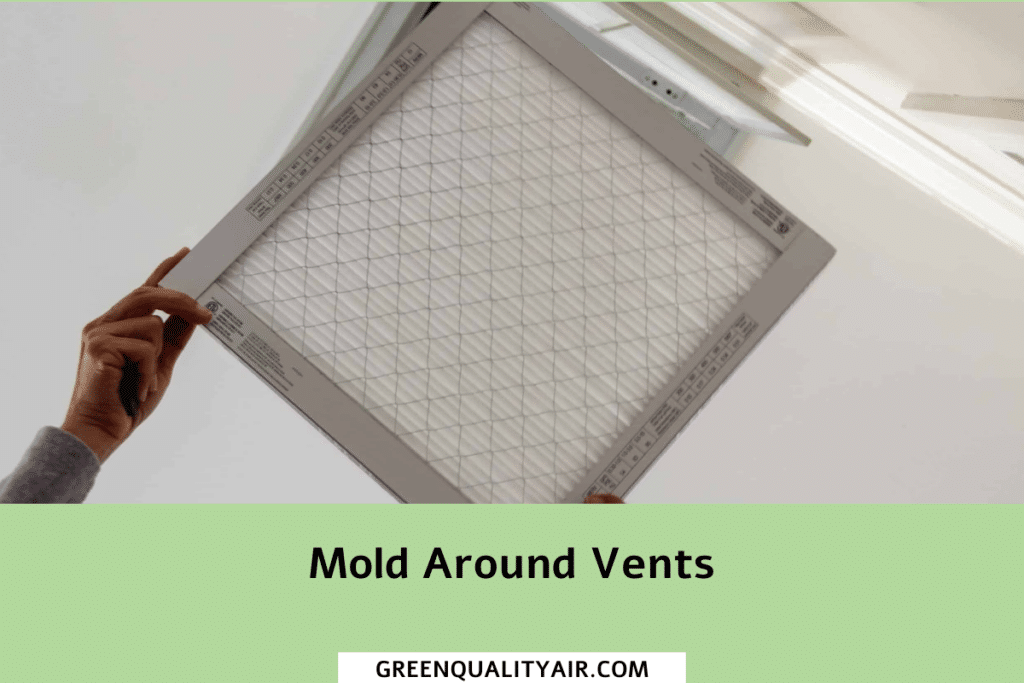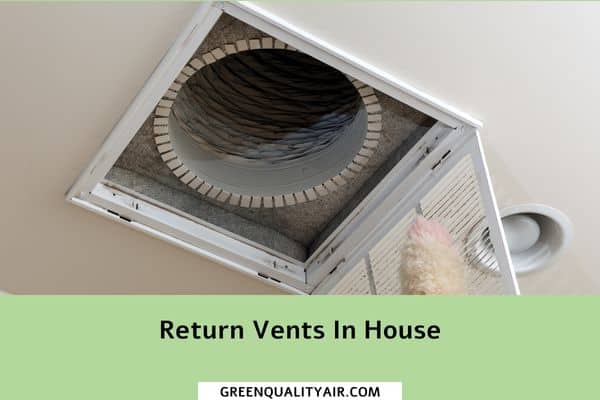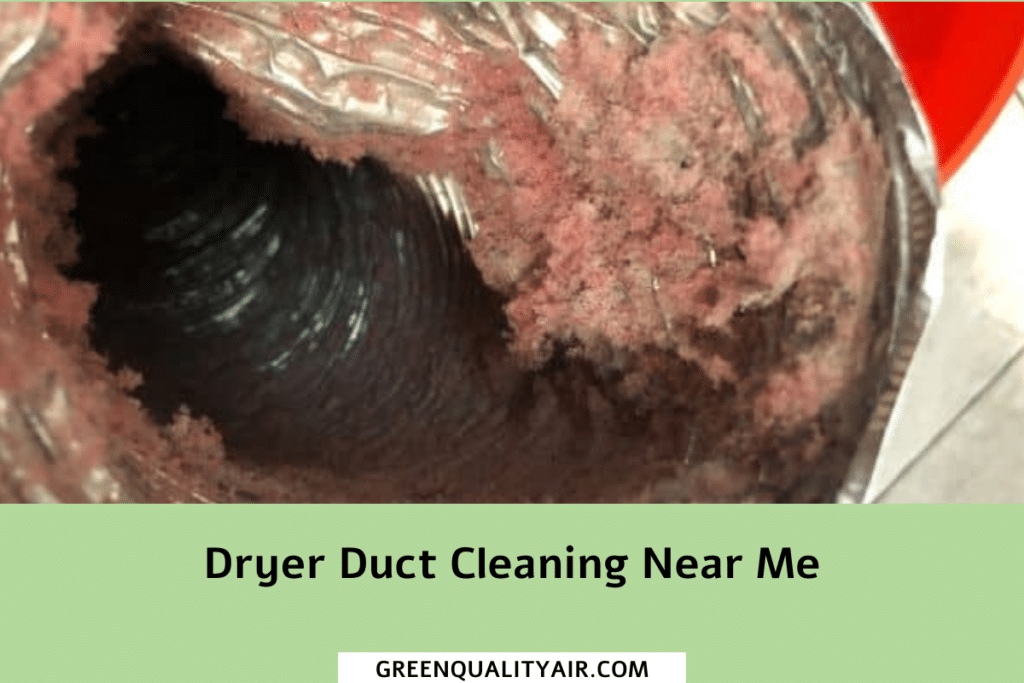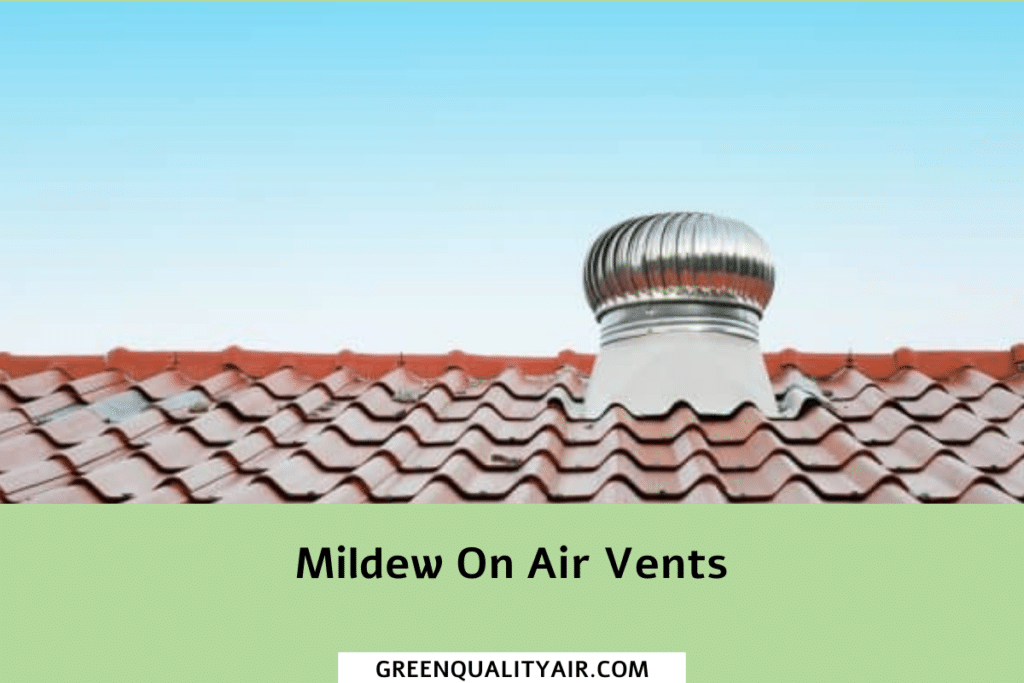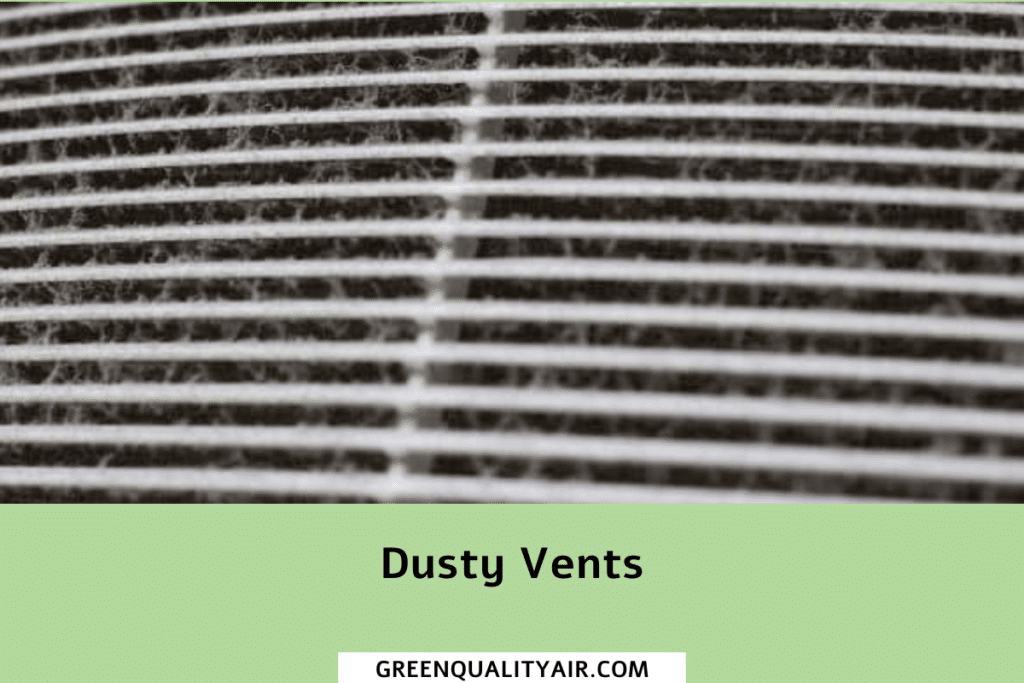It appears most of us have dealt with the unwanted irritant known as mold. With its musty odor and tendency to spread quickly throughout our homes, it can be difficult to get rid of. The truth is that mold can thrive in many places and one common area for mold growth are vents! Ignoring this problem or trying to tackle it yourself can lead to serious problems down the road such as significant property damage, allergic reactions, or even long-term health risks.
We’ll explore the causes of why you might find mold around air conditioning and heating vents, prevention methods, what kind of help you should call if an infestation occurs (and some tips on choosing a professional who could take care!), and finally how costly it may be if left untreated. So let’s begin by figuring out why your home might have molded A/C & HVAC systems!
Take a Closer Look at Your Ceiling and Wall Vents
Do you ever take a moment to inspect the vents that line your walls and ceilings? If not, you may be overlooking a potential breeding ground for mold. Unfortunately, the small crevices and cracks around your vents can trap moisture, creating the perfect environment for mold to thrive.
Mold not only looks unsightly, but it can also pose a health hazard to you and your family. To prevent the growth of mold in your home, it’s important to regularly inspect and clean your vents. A closer look may reveal a buildup of dirt, dust, and even mold. Taking action now can help improve your home’s air quality and keep your family healthy.
Contact Us
Understand the Risks of Mold Exposure
Mold exposure is a serious health hazard that should not be taken lightly. Unfortunately, it can easily go undetected, especially if it’s lurking around vents. Breathing in mold spores can cause a range of health problems, including respiratory issues, allergies, and even neurological issues.
That’s why it’s important to be aware of any signs of mold growth and to take action as soon as you spot them. If you notice a musty odor or suspect that mold is present, it’s best to call in a professional to assess the situation and take the necessary steps to eliminate it. Don’t wait until it’s too late to protect yourself and your loved ones from the risks of mold exposure.
Clean and Discard Any Moldy Objects
Mold tends to grow in warm and humid environments, especially around vents where there can be moisture and accumulation of dust. However, mold can be hazardous to your health, and it’s essential to clean and discard any moldy objects immediately. The consequences of ignoring mold can lead to respiratory problems, allergies, and other health issues.
Whether it’s in the corner of your shower, on the walls, or window sills, it’s essential to take action right away. Start with cleaning any visible mold with a solution of water and bleach, and if the mold persists, call in a professional. Remember, by taking action now, you can prevent further harm to yourself and others.
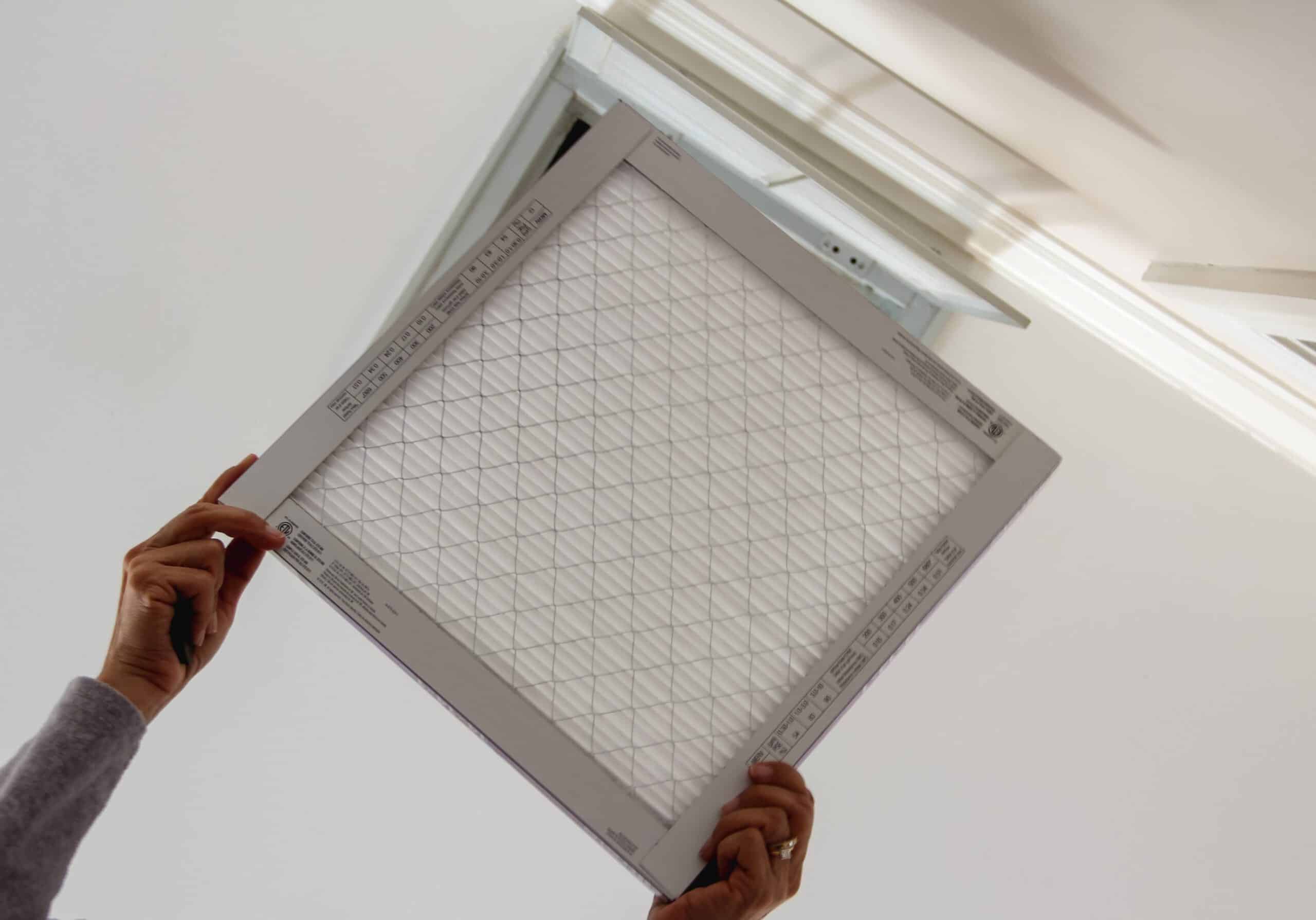
Consider Replacing Old Vents with New Ones
When was the last time you took a look at your home’s vents? If it’s been a while, there’s a good chance that you may be unknowingly putting your family’s health at risk. Over time, vents can accumulate dust, debris, and even mold. Mold around vents is a particularly concerning issue, as it can cause a whole host of health problems. Inhaling mold spores can trigger allergies, asthma, and even respiratory infections.
To keep your home’s air clean and safe for your family, it may be time to consider replacing your old vents with new, properly functioning ones. Not only will this improve the air quality in your home, but it can also save you money on energy costs in the long run.
More Articles
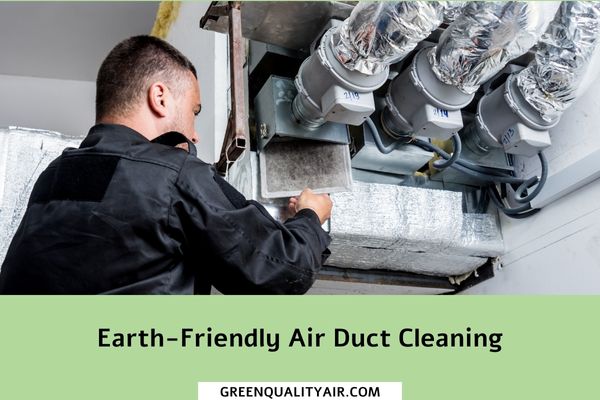
Earth-Friendly Air Duct Cleaning: Sustainable Solutions for Clean, Healthy Air
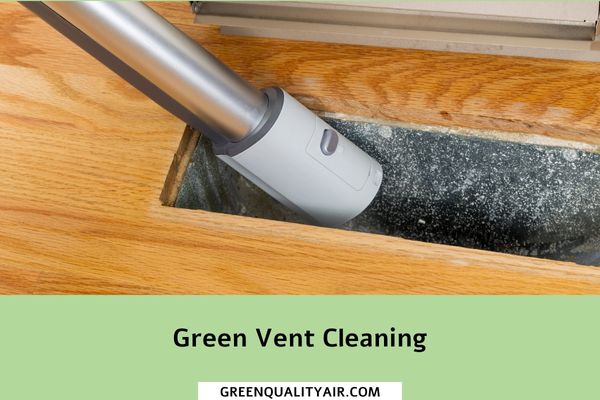
Green Vent Cleaning – A Comprehensive Guide to Sustainable and Effective Ventilation Maintenance

Breathe Easy with Green Air Duct Cleaning Solutions

Earth-Friendly Air Duct Cleaning: Sustainable Solutions for Clean, Healthy Air
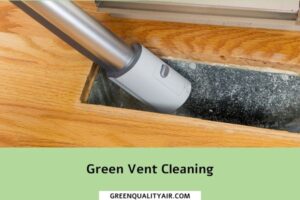
Green Vent Cleaning – A Comprehensive Guide to Sustainable and Effective Ventilation Maintenance

Breathe Easy with Green Air Duct Cleaning Solutions
Use a Powerful Dehumidifier to Reduce Humidity Levels
If you notice mold around your vents, it’s a sure sign that your home’s humidity levels are too high. While mold is not only unsightly, it can also cause respiratory issues and other health problems for you and your family. Fortunately, there’s an easy solution that can help reduce the moisture in your home: a powerful dehumidifier.
By getting rid of excess moisture in the air, a dehumidifier can prevent mold growth, improve indoor air quality, and create a more comfortable living environment. You’ll notice a difference in the air quality and the way you feel as soon as you start using one. So if you want to get rid of the mold around your vents and maintain a healthy home, invest in a powerful dehumidifier today.

Make Sure to Properly Ventilate Your Home
Properly ventilating your home is crucial for maintaining a healthy living environment. It’s not just about maintaining a comfortable indoor temperature – poor ventilation can lead to the growth of harmful mold around vents, which can cause a wide range of health problems. If you’re seeing mold around your vents, it’s a sign that there’s not enough airflow in your home. This can be a result of many factors, from outdated ventilation systems to clogged air filters. Whatever the cause, addressing the issue as soon as possible is key to keeping your family safe and healthy. So be sure to prioritize ventilation in your home, and don’t hesitate to call in a professional if you need help.
Ultimately, the health of your family comes first when it comes to mold growth inside your home. Taking the measures listed above can go a long way towards ensuring that your indoor air quality is free from dangerous mold spores. If you think that mold has become an issue in your home, don’t wait – contact a professional remediation specialist who can provide safe solutions and help you identify the cause of your problem.
The hazards associated with mold are serious and the sooner you address them, the better off everyone in your household will be. So don’t delay—take action today and ensure clean air for yourself and those around you!
FAQ - Mold Around Vents
What causes mold to form around vents?
Mold around vents is a common problem that many homeowners and building managers face. It not only looks unsightly, but it can also cause potential health hazards if left untreated. But what exactly causes mold to form in this specific area?
Firstly, it’s important to understand what mold is and how it forms. Mold is a type of fungus that thrives in warm, damp environments with poor air circulation. This makes vents the perfect breeding ground for mold growth. When warm air from inside your home or building meets the cold surface of a vent, condensation occurs, creating the ideal environment for mold spores to settle and grow.
But why do some vents have more mold than others? The answer lies in the ventilation system itself. Vents that are located in high humidity areas such as bathrooms or kitchens tend to have more moisture which makes them susceptible to mold growth.
Another contributing factor is inadequate ventilation systems. If your property doesn’t have proper ventilation or if there are blockages preventing air flow, moisture will get trapped around the vent area, leading to an increase in humidity levels and ultimately promoting mold growth.
Moreover, leaks in plumbing or HVAC systems could also be a culprit for causing excess moisture around vents. Even minor leaks can lead to major problems over time as water accumulates and creates the perfect environment for mold colonies to develop.
Lastly, poor insulation could exacerbate the issue by causing temperature fluctuations between inside and outside of ductwork near vents. These abrupt changes create an ideal breeding ground for molds spores resulting in excessive amounts of visible molds on surfaces.
So now that you know what causes mold around vents let’s talk about prevention! First things first- regular maintenance of your HVAC system including cleaning filters regularly can help prevent excess dust build-up where molds feed on nutrients provided by debris accumulation.
It’s also important to check your property periodically for any existing leaks or water damage that may lead repugnant odors, visible molds or changes in indoor climate. Proper insulation and fixing any leaks on your HVAC system can help better regulate temperature and reduce the possibility of mold growth.
In summary, mold around vents is caused by a combination of factors that create a warm, damp environment ideal for mold spores to thrive. By addressing issues such as poor ventilation, leaks, and inadequate insulation, you can prevent this problem from occurring in the first place. Regular maintenance and timely repairs will not only keep your property looking its best but also promote a healthy living environment for you and your loved ones.
Is mold around vents dangerous?
The presence of mold around vents is not only unsightly, but it can also pose a potential danger to your health. Mold is a type of fungus that thrives in damp and poorly ventilated environments, making HVAC systems the perfect breeding ground for their growth.
Firstly, let’s discuss the different types of mold that can be found around vents. The most common type is non-toxic mold, which may cause minor respiratory issues such as coughing or sneezing. However, there are also more toxic types of mold such as black mold (Stachybotrys chartarum) that can have serious effects on your health if left unchecked. These include severe allergic reactions, respiratory problems, and even neurological disorders.
But why does mold tend to grow around vents in the first place? It all comes down to moisture and air flow. Vents are responsible for circulating air throughout your home or office building. However, when there is excess moisture present due to leaky pipes or high humidity levels, this creates the perfect environment for mold growth. Furthermore, if air filters are not changed regularly or if the HVAC system itself is clogged with dirt and debris, it restricts air flow and promotes condensation – another catalyst for mold growth.
So how do you know if you have a problem with Mold around Vents? Well first off – any visible signs of discoloration should be taken very seriously! If you notice dark spots on walls near ventilation openings or strange black fuzz accumulating near vents themselves – take action immediately!
To further prevent these unpleasant scenarios from happening in your home or commercial space – regular maintenance checks by professionals must be done at least twice a year! Another important factor in reducing moisture buildup would be proper ventilation throughout your living/working space!
But what about the dangers posed by exposure to molds? While it may seem like just an aesthetic issue at first glance – allowing toxic molds like Stachybotrys to proliferate can have disastrous consequences on your health! These molds produce harmful mycotoxins which, when inhaled or ingested, can lead to chronic fatigue, headaches, and even memory loss!
In conclusion – the presence of mold around vents should not be taken lightly. If left unchecked, it can pose a serious threat to your well-being. Prevention is key here – regular maintenance checks and proper ventilation are crucial in keeping these pesky fungi at bay. So don’t neglect this issue any longer – take action now before it’s too late!
How often should I check for mold around my vents?
As a homeowner, it is important to be proactive in maintaining the health and safety of your living space. Mold can pose serious health risks and should not be taken lightly. While many people are aware of the dangers of mold growth in their home, not everyone knows how often they should check for mold around their vents.
First and foremost, it’s important to understand what causes mold growth around vents. Moisture is the main culprit, whether it’s from condensation or a leaky pipe near the vent area. These damp environments create an ideal breeding ground for mold spores to thrive and spread throughout your home.
So how often should you check for mold around your vents? The short answer is at least twice a year, but there are certain factors that may require more frequent inspections.
If you live in an area with high humidity or have had past issues with moisture or water damage in your home, then checking at least every three months would be advisable. Likewise, if you notice any musty odors or see discoloration on your walls or ceiling near your vents, then it’s time for an immediate inspection.
Another important thing to keep in mind is that mold growth can happen quickly – within 24-48 hours – so addressing any potential issues as soon as possible can save you from bigger problems down the line. Regularly checking for any signs of moisture build-up around your vents will allow you to catch and address any issues early on before they become major infestations.
But simply checking isn’t enough – taking preventative measures will also help reduce the likelihood of mold growing around your vents. Ensure all exhaust fans are properly functioning and vented outside rather than into attics or crawl spaces where excess moisture can accumulate. Installing dehumidifiers and keeping household humidity levels below 60% can also aid in preventing mold growth.
In addition to regular inspections, it’s crucial to properly clean any visible signs of mold immediately – using a diluted bleach solution or specialized mold cleaner. If the mold growth is extensive, it’s best to call in a professional to properly remove and remediate the issue.
In conclusion, while there is no set timeframe for checking for mold around your vents, being proactive and regularly inspecting can save you from potential health hazards and costly repairs in the future. Remember, when it comes to mold growth – prevention is key! Stay vigilant and address any issues as soon as they arise.
How do I properly ventilate my home to prevent mold around vents?
Mold, the unwanted houseguest that can cause health issues and wreak havoc on our homes. It’s a common problem that plagues many households, especially in areas with high humidity levels. One major contributing factor to mold growth is poor ventilation. In fact, according to experts, improper ventilation is responsible for almost 80% of all mold problems.
So how do we properly ventilate our homes to prevent mold around vents? Let’s delve into the basics first.
First and foremost, let’s understand what exactly is ventilation. In simple terms, it means letting fresh air flow in and out of your home while removing stale or contaminated air. This exchange of air helps regulate humidity levels and prevents harmful pollutants from accumulating.
Now let’s talk about why proper ventilation is crucial for preventing mold growth around vents.
When warm moist air gets trapped in enclosed spaces like bathrooms or attics without any outlet for escape, it creates an ideal breeding ground for mold spores – tiny microscopic organisms that thrive in damp environments. These spores are not only unsightly but can also lead to serious health issues such as allergies and respiratory problems.
The key to preventing this issue lies in creating proper airflow throughout your home by implementing these tips:
1) Install exhaust fans: Exhaust fans are particularly important in areas where moisture tends to build up quickly such as bathrooms or kitchens. These fans work by pulling out humid air from inside your home and releasing it outside.
2) Use dehumidifiers: If you live in an area with high humidity levels or have rooms that tend to accumulate moisture easily like basements or laundry rooms, investing in a dehumidifier can be a game-changer! These appliances work by absorbing excess moisture from the air, thus reducing overall humidity levels.
3) Regularly clean filters: Clogged HVAC filters restrict airflow which can lead to condensation buildup around vents – a perfect environment for mold growth! Be sure to change or clean your filters regularly to ensure proper ventilation.
4) Open windows: Simple as it may sound, opening the windows in your home can significantly improve airflow and prevent mold growth. Be sure to open them on opposite ends of your house for effective cross-ventilation.
5) Properly seal air leaks: Any gaps or cracks around doors, windows, pipes, or vents can contribute to poor indoor air quality and increase the chances of mold growth. Regularly inspect these areas and seal any gaps with caulking or weather-stripping.
In conclusion, proper ventilation is crucial for preventing mold around vents. By implementing the tips mentioned above, you can not only eliminate this pesky problem but also improve the overall air quality in your home. Remember, prevention is always better than cure when it comes to dealing with mold!
Can mold around vents spread to other areas of my home?
Absolutely, mold around vents can definitely spread to other areas of your home. In fact, the presence of mold in your ventilation system can pose a serious health risk to you and your family. So let’s dive into what causes this issue and how you can prevent it from happening.
Firstly, let’s understand what exactly mold is. Mold is a type of fungus that grows in warm, damp and humid environments. This makes air ducts and vents the perfect breeding ground for these pesky organisms. When moisture gets trapped in these areas due to lack of proper ventilation or leaks, it creates the ideal environment for mold growth.
Now, why do we need to worry about this? Well, apart from being an eyesore and having a musty odor, mold spores can easily spread through the air conditioning system to other parts of your home. These tiny particles float around in the air and when they come into contact with damp surfaces or organic material like wood or cloth, they start growing rapidly.
But that’s not all – exposure to mold has been linked to various health issues such as respiratory problems, allergies, skin irritation and even infections. This is particularly dangerous for those with pre-existing respiratory conditions such as asthma or COPD.
So how do we prevent this nightmare from becoming a reality? The key here is proper maintenance of your HVAC system. Regularly cleaning and changing filters will ensure that there isn’t any excess moisture buildup within your vents. Additionally, repairing any leaks or cracks immediately will prevent water from seeping into your ducts.
Investing in dehumidifiers can also help keep the humidity levels low in your home which will discourage mold growth. And if you do discover any visible signs of mold around your vents or elsewhere in your house – seek professional help immediately! Remember that trying to DIY clean up without proper gear could actually worsen the problem by releasing more spores into the air.
In conclusion, mold around vents can definitely spread to other areas of your home and should be taken seriously. By following proper maintenance practices and being vigilant about any signs of mold growth, you can ensure a safe and healthy living environment for yourself and your loved ones. So don’t wait till it becomes a bigger issue – take proactive steps now to prevent the spread of mold in your home!

